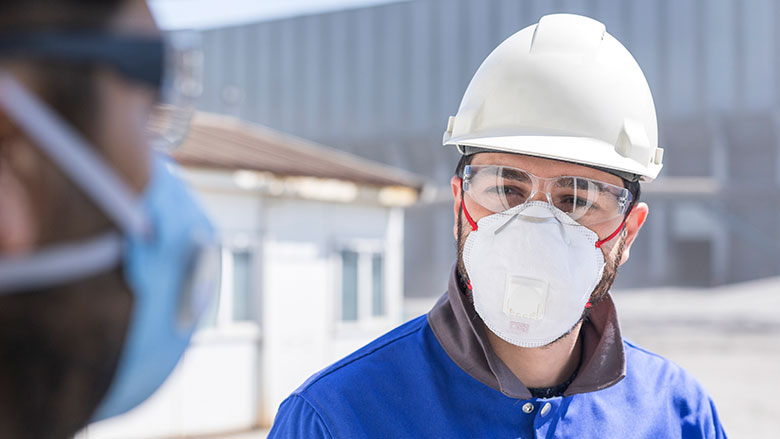Respiratory Protection Ranks Third in Top 10 Most Violated OSHA Standards

An important reason to make sure your company does a regular respirator fit test for your workforce is that OSHA audits potential violators of its regulations. Keep in mind that each violation OSHA cites can cost the employer over $12,000 per citation, per day. In addition to fines, there is potential for a shutdown of your business. OSHA has just announced its Top 10 most violated standards for fiscal year 2020. The list encourages safety managers to be more aware of common dangers in the workplace. We will be breaking down the top 5 most violatedac OSHA standards for 2020.
Table of Contents
Number 1: Fall Protection
When employees are required to work at elevation, even as little as 4 feet, there needs to be adequate fall protection so the worker is protected from a slip or a fall. Some job sites require that the worker wears a harness connected to a safety cable or chain, known as a fall arrest system. If protection is not satisfactory by OSHA standards, it is a citable violation.
Number 2: Hazard Communication
Hazard communication, also called HazCom, is a specific set of procedures and processes whereby workplaces need to outline where hazards are located, and how to avoid them. An example of HazCom is clearly marking containers that hold dangerous chemicals. Additional hazards, such as falling hazards and low-quality air hazards, must be clearly stated in communications if present. This communication is intended to protect unsuspecting workers from potentially serious injury.
Number 3: Respiratory Protection
Respiratory protection is important for workers that are exposed to harmful toxins or particles in the air. Employers are required to make sure that their workers are wearing proper-fitting respirators that effectively filter out dangerous substances from being inhaled by the worker. Failure to provide fit tests annually is one of the most cited violations of the OSHA standard on respiratory protection.
It is important that the respirator forms a complete seal around the area where the mask touches the face in order to properly protect them. If the seal is not secure, pollutants from the air can enter the mast through the gaps and cause harm to the worker. This is the reason why fit tests are so important. Ineffective respirators can lead to severe, and even fatal illness.
Number 4: Scaffolding
Since scaffolding can cover large areas and rise to high altitudes, they need to be carefully inspected to ensure when employees walk on them they are as safe as possible. Anything from tripping hazards to possible electrocution has to be considered before scaffolding is deemed safe for use.
Number 5: Ladders
Depending on the size and type of the ladder being used for a job, there could be OSHA requirements to ensure safety. For instance, if a worker is on a fixed ladder that is 24 feet tall or more, fall protection must be provided. Although there are currently no fall safety requirements for portable ladders, some states require contractors to have a fall safety mechanism in place for ladders that are over six feet tall.
Complying With OSHA
Although many business owners are not aware of the laws and standards around worker safety, ignorance of the law is never an excuse. It is the business owner’s responsibility to study and understand the best safety practices for their industry and work environment. OSHA representatives may show up without notice at your business and enforce regulations to keep your workers safe. Employers who are knowledgeable and are making good faith efforts towards compliance typically fare better than others in these situations.
Examinetics is the nation’s leading provider of occupational health solutions. We deliver workplace safety compliance services to more than 3,000 clients in over 15,000 locations annually. Examinetics helps leading companies to achieve compliance, minimize productivity loss, and acquire vital data required for optimal health.









